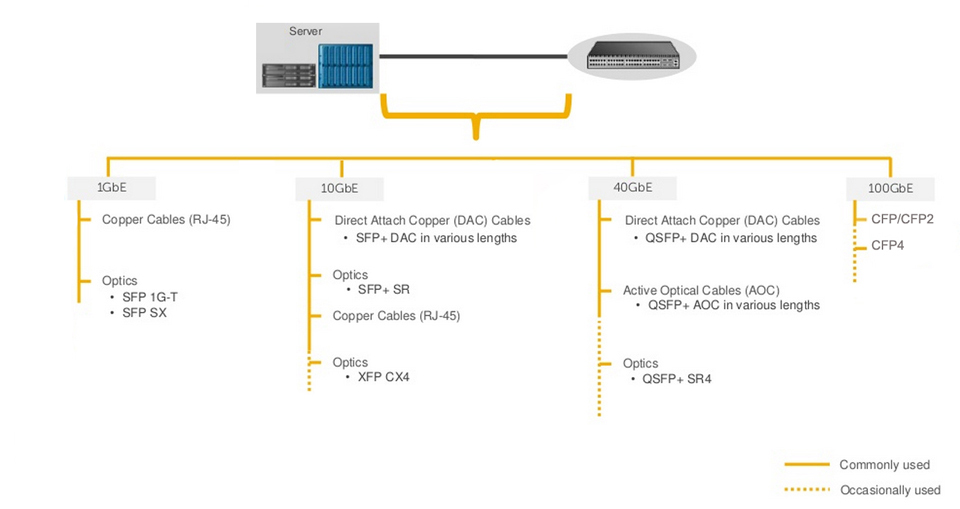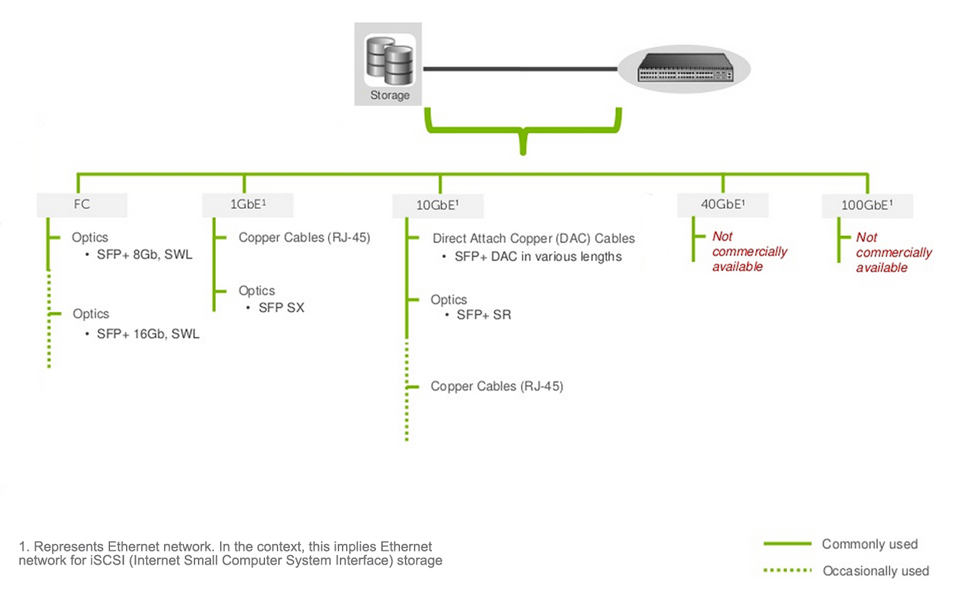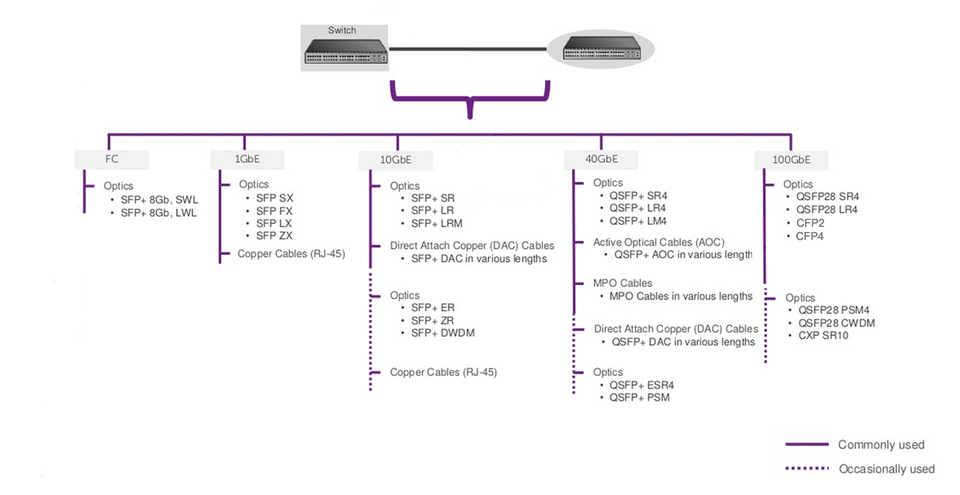WDM Optical Networking Solutions
COMPUFOX offers a number of WDM Optical Networking solutions which allow transport associated with a mix of services up to 100 GbE over dark fiber and WDM networks providing for the whole set of probably the most demanding CWDM and DWDM network infrastructure needs. Because the physical fiber optic cabling is expensive to implement for every single service separately, its capacity expansion using a WDM is a necessity.
WDM Architectures

WDM (Wavelength Division Multiplexing) is a concept that describes combination of several streams of data/storage/video or voice on the same physical fiber optic cable by utilizing several wavelengths (or frequencies) of light with each frequency carrying a different sort of data. There's two types of WDM architectures: CWDM (Coarse Wavelength Division Multiplexing) and DWDM (Dense Wavelength Division Multiplexing). CWDM systems typically provide 18 wavelengths, separated by 20 nm, from 1470nm to 1610nm according to ITU-T standard G.694.2. However, for different applications, there are different ITU-T standard to define the specific wave range and channels. Compared to CWDM, DWDM is defined in terms of frequencies. Some DWDM network systems provide up to 96 wavelengths, typically without any more than 0.4 nm spacing, roughly over the C-band range of wavelengths.
CWDM Technology
CWDM is proved to be the initial access point for many organizations due to its lower cost. Each CWDM wavelength typically supports as much as 2.5 Gbps and could be expanded to 10 Gbps support. This transfer rates are sufficient to aid GbE, Fast Ethernet or 1/2/4/8/10G Fibre Channel, along with other protocols. The CWDM is limited to 16 wavelengths and is typically deployed at networks as much as 80 km since optical amplifiers can't be used due to the large spacing between channels.
DWDM Technology
DWDM is a technology allowing high throughput capacity over longer distances commonly ranging between 44-88 channels/wavelengths and transferring data rates up to 100 Gbps per wavelength. Each wavelength can transparently have a wide range of services. The channel spacing from the DWDM solutions is defined by the ITU standards and can range from 50 GHz and 100 GHz (the most widely used today) to 200 GHz. DWDM systems can provide up to 96 wavelengths (at 50 GHz) of mixed service types, and can transport to distances up to 3000 km by deploying optical amplifiers (e.g., DWDM EDFA) and dispersion compensators thus enhancing the fiber capacity with a factor of x100. Due to its more precise and stabilized lasers, the DWDM technology tends to be more expensive in the sub-10G rates, but is really a more appropriate solution and it is dominating for 10G service rates and above providing large capacity data transport and connectivity over long distances at affordable costs.
Note: COMPUFOX WDM optical networking goods are designed to support both CWDM and DWDM technology by utilizing standards based pluggable CWDM/DWDM Transceivers such as SFP, XFP and SFP. The technology used is carefully calculated per project and according to customer requirements of distance, capacity, attenuation and future needs.
DWDM OVER CWDM NETWORK
The main benefit of CWDM is the price of the optics that is typically 1 / 3 of the price of the equivalent DWDM optics. This difference in economic scale, the limited budget that lots of customers face, and typical initial requirements to not exceed 8 wavelengths, means that CWDM is a popular entry point for a lot of customers. With COMPUFOX WDM equipment, a customer can start with 8 CWDM wavelengths however grow by introducing DWDM wavelengths in to the mix, utilizing the existing fiber and maximizing roi. By utilizing CWDM and DWDM network systems or the mixture of thereof, carriers and enterprises are able to transport services as much as 100 Gbps of data.
Typically CWDM solutions provide 8 wavelengths capability enabling the transport of 8 client interfaces over the same fiber. However, the relatively large separation between your CWDM wavelengths allows growth of the CWDM network with an additional 44 wavelengths with 100 GHz spacing utilizing DWDM technology, thus expanding the present infrastructure capability and making use of the same equipment included in the integrated solution.
.jpg)
Additionally, the normal CWDM spectrum supports data transport rates as high as 4.25 Gbps, while DWDM is utilized more for large capacity data transport needs as high as 100 Gbps. By mapping DWDM channels inside the CWDM wavelength spectrum as demonstrated below, higher data transport capacity on the same fiber optic cable is possible without any requirement for changing the existing fiber infrastructure between the network sites. As demonstrated through the figure beside, CWDM occupies the following ITU channels: 1470 nm, 1490 nm, 1510 nm, 1530 nm, 1550 nm, 1570 nm, 1590 nm, and 1610 nm, each separated from the other by 20 nm. COMPUFOX can insert into the of the 4 CWDM wavelengths (1530 nm,1550 nm,1570 nm and 1590 nm), a set of additional 8 wavelength of DWDM separated from one another by only 0.1 nm. By doing so up to 4 times, the CWDM network capability can easily expand by up to 28 additional wavelengths.
The other figure below further demonstrates in detail the expansion capabilities via the DWDM spectrum. As seen below, just one outgoing and incoming wavelength of the existing CWDM infrastructure can be used for 8 DWDM channels multiplexing in to the original wavelength. Since this DWDM over CWDM network solution is integrating the DWDM transponders, DWDM MUX/DeMUX and EDFA (optical amplifier if needed), the entire solution is delivered simply by adding a really compact 1U unit. This expansion is achieved with no service interruption to the remaining network services, or to the data, and with no need to change or replace any of the working CWDM infrastructures.

Advantages of COMPUFOX WDM Optical Networking Solutions
With COMPUFOX compact CWDM solutions, you could get all of the above benefits and much more (such as remote monitoring and setup, integrated amplifiers, protection capabilities, and integration with 3rd party networking devices, etc.) inside a cost effective 1U unit, enabling you to expand as you grow, and utilize your financial as well as physical resources towards the maximum.
To purchase your CWDM and DWDM transceivers, please click on the links below:
Read more »

















